I'm a vegetarian and I'm proud of it.
For years I have been thought as a freak but I stand by this decision. In my case, the choice of eating style was not decided by beliefs, religion or philosophy but by the fact that I haven’t been keen on meat since childhood. I was stuffed with meat products and, even supervised, I was able to smuggle “this stuff” to the dog. I had anaemia, so additionally I drank Biovital. As a teenager I began to suffer from severe headaches. Migraines occurred in my family, so there might have been suspicion of the genetic heredity on my condition. Finally, my mother, anxious about my meat disgust, during the medical visit (due to asthma I was under the constant care of an allergist), asked what to do with that problem. The doctor said that if I did not want to eat meat so much, I could exclude it from my diet after the school-leaving exam. I waited for the last exam and... since that moment I have not touched meat. I was not even discouraged by the ultimatum of my mother that I had to cook myself. It taught me discipline and culinary art. At the same time, I also stopped drink coffee, which in the last years of high school I drank too much.
The effect of changing my diet: the morphology, despite severe intestinal disease (more in the article "A good life with Leśniowski’s-Crohn's disease":
http://jarkiewicz.eu/articles/index/index/article/a-good-life-with-lesniowski is perfect, the level of ferrum is in the upper norm, protein in the norm, other elements in the norm. Sporadic headaches. Energy to numerous activities, although I don’t drink coffee at all - excess.
Let me stress, I do not eat meat, I do not drink coffee. I am proud of it, even though I have heard for years that I am strange, abnormal - in the sense that normal people - are those who eat meat. I don’t care. I may be "abnormal", most important is I am myself and live in a harmony with myself.
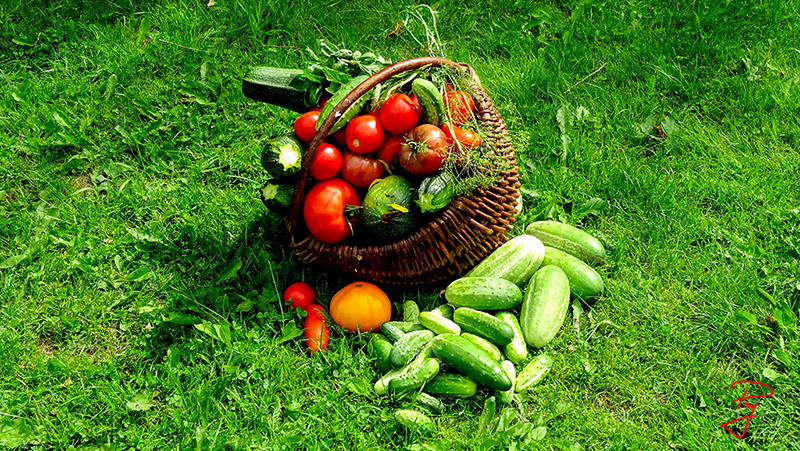
Vegetarianism, veganism, pescetarianism – who the hell?
In Poland all these notions are being misinterpreted. First of all, in our country it has been assumed that vegetarians eat fish. I wondered why, after all, the fish is closer to be an animal than a plant? I was taught at biology lesson that fish have brains, it means they are up to something. And such a fish like shark or pike are up even more, using hunting strategy. Finally, someone explained to me that that this idea originates from the Christian religion, in which eating fish during fast is permitted. I understand that according to the religion fish is closer to plant than to animal. However, I will stand by my belief. A vegetarian eats plants and dairy products of animal production. For those who allow fish to the diet, not eating only red meat, was reserved the term - pescatarians (pesca – in Latin "fish").
In a Polish restaurant, when I ask for a vegetarian dish, I’ve always been recommended fish. When I say that I do not eat fish, I’m immediately asked on the verge of panic - do I eat dairy products? Those who don’t eat animal dairy products are called vegans. I know that for a layperson, all of that names blend into one. However, in case of restaurants, such differences should be distinguished. In restaurants I have mastered to compose my meal of side dishes (salads, hot vegetables and the so-called "starchy addition": potatoes / rice / groats).
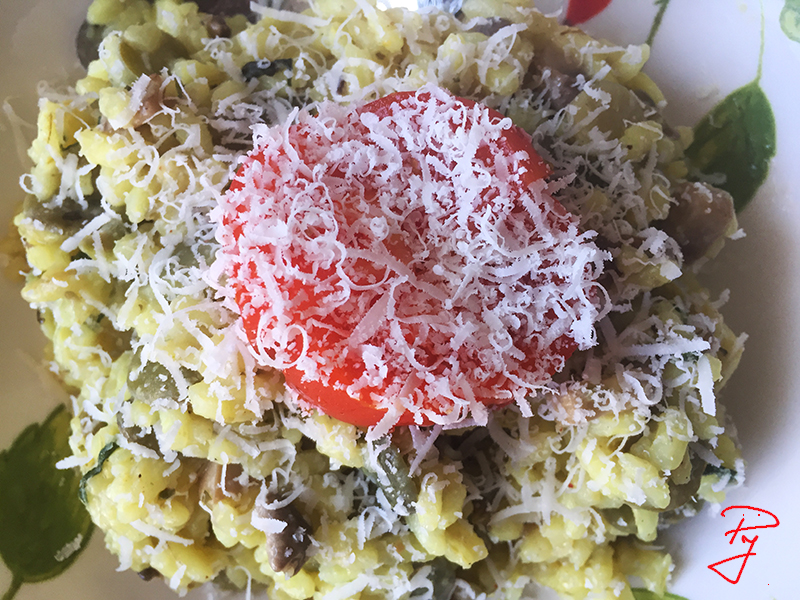
God, excluding meat will take away my strength and important nutrients!
WHAT A LOADS OF RUBBISH!
To support my claim, let me quote a few lines from the book “The pH miracle”:
"Our body contains only 7 percent of proteins (70 percent is water, 20 percent fat, 1-2 percent vitamins and minerals and 0.5-1 percent sugar). In most types of meat there are 20-25 percent of proteins, and so they provide us with more proteins than the human body needs. If you don’t eat meat, don’t be afraid because spinach and other green vegetables are much richer in amino acids (building material of proteins) than a steak!” – the translation from Polish version of the book, page 125.
Vegetables, especially green and green parts of other vegetables (these have the most chlorophyll supporting blood cells in the distribution of oxygen in the body) are very rich in nutrients, supplying our bodies with vitamins, minerals and microelements.
Green vegetables and dark fruits such as blueberries, chokeberry, blackcurrant are a rich source of ferrum.
All necessary microelements, vitamins and complex proteins you may also find in sprouts. It is an embryo, a source of life and vital energy.
Can anyone become a vegetarian?
Yes, but there is one condition - you have to like vegetables. Maybe it is "obvious obviousness" but in practice it might be different. When you limit meat consumption, you have to eat more vegetables which will provide us with the right amount of microelements. Therefore, one shouldn’t be sniffy about that you don’t like this or that because you limit your diet, the diet which is already limited. I love vegetables. I may eat a salad made of vegetables without salt and dressing. I think that it kills its natural taste. Dressings are hard to digest and they are unnecessary addition. They can be successfully replaced with: olive oil, lemon, yogurt.
Vegetarian cuisine is more challenging than that one based on meat products. You have to provide the body with all those ingredients that are contained in meat (eg. proteins, iron), skilfully balance the meal (more in the article: "A balanced meal versus wrong eating habits":
http://jarkiewicz.eu/articles/index/index/article/a-balanced-meal-contra-wrong-eating-habits ) from ingredients of plant origin and dairy products. It's the cuisine of creative people. I think that the combo meal: potato fries, fried egg, white cabbage salad is the okay, but from time to time. I’m also not a fan of ready-made soya products (chops, pies, sausages). Interference in the genetics of this plant does not reflect favourably on what we later get to eat. Sometimes you can eat something like that but you should not base your diet on it.
When you buy such products (vegetable pate, humus) look at the ingredients on the packaging. Then, with petrifaction, you’ll find out that in a pumpkin pie, the pumpkin is 5%, and in the humus, the list of flavour enhancers occupies take three lines, while chickpeas and sesame seeds are some negligible amounts. Pate, paste, or humus, you may make yourself at home. It is not a long-lasting and labour-intensive process and you are sure of all the ingredients used.
When using a vegetarian diet, it is necessary to take into consideration the presence of fats in food. They are needed to absorb such important vitamins as: A, D, E and K. I eat small amounts of butter. I also use olive oil, rapeseed oil and unrefined coconut oil.
Vegetarian diet also forces regular nutrition. Otherwise we are simply hungry because the body, not covered with heavy food, digests faster.
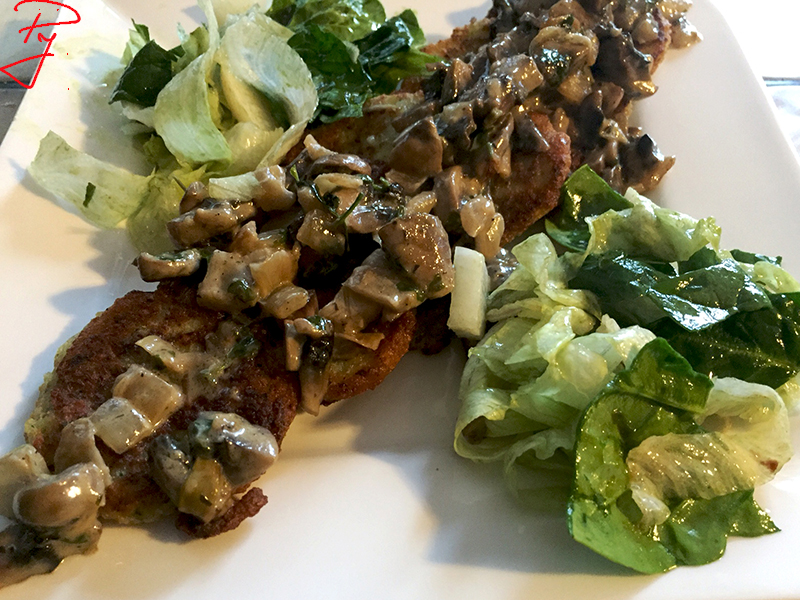
Vegetarianism - as a therapeutic method.
So you eat regularly. By providing the body with plants containing proteins or ferrum, you absorb it much faster and more than with long-decomposing meat. "Our body performs much less work when it creates proteins from a set of individual amino acids presented in greens, than when it has at its disposal long molecules of proteins connected in accordance with an unknown scheme of another organism, for example a cow or chicken." - Viktoria Boutenko “Green for Life" p. 62 (translation from Polish version of the book) and thereinafter quoting the author: Professor W.A. Walker from the Harvard School of Public Health warns that "incompletely digested proteins’ fragments may be absorbed into the bloodstream. The absorption of these large molecules contributes to the development of food allergies and immunological diseases.".
Replacing meat with plants in the diet causes that our body is not so acidified and full of toxins.
For example:
- Ph of avocado is +15,6 (+ means alkalinity potential, measure about 30 gr of product),
- Ph of beef is -34.5 (- means the potential of acidity, measure about 30 gr of product).
Source: R.O. Young, S. Redford Young “The pH miracle”.
Below I present two therapeutic methods plant-based diets:
Dr Gerson's method - a diet supporting the treatment of cancer, as well as other civilization diseases, based only on fruits and vegetables, grains and certain oils.
Dr Max Gerson (1881 - 1959) - a German medic and scientist who based his therapy of a proper diet on his own experience. It started when he was struggling with chronic headaches and none of his med-colleagues could help him. So dr Gerson began to search for the cause himself. He kissed goodbye to meat and began to eat fruits and vegetables from his grandmother's garden. After some time, the headaches stopped. Then, doctor-colleagues began sending him hopeless medical cases, which in most cases were able to treat using the diet and coffee enemas, aimed at cleansing the liver from toxins. According to dr Gerson, meat of farm animals contains antibiotics, hormones, taste enhancers (famous “E”). Such meat isn’t fully digestable. All this chemical crap goes to our bloodstreams, making the life of the liver harder. The toxins are formed and those not removed with the help of fiber (raw vegetables and fruits) and purifying enemas lead to serious dysfunctions of the body. It was told by the man who lived in the last century, so what does meat contain today? I leave this issue to think about.
For those interested in this topic, I recommend books:


Dr Dąbrowska's diet based on exclusion in the first period (from one week to six weeks) all ingredients containing carbohydrates and building elements. The basis of the diet are low-grade starchy vegetables (it means: potatoes, sweet potatoes, legumes – out from the menu!) and fruits with low sugar level (such as lemons, grapefruits, berries). Vegetables and fruits are eaten fresh or in the form of soups and juices. As a result of this "starvation diet" the body begins to purify itself of all calculi, eliminates excess fat and above all damaged, pathogenic cells. After a period of such "starvation diet" a balanced diet starts, introducing legumes, grains, oils and fish.
Dr Ewa Dąbrowska is a doctor of medical sciences specializing in immunological diseases. From the 90s of the last century, she has developed a method supporting the treatment of chronic diseases based on a vegetable and fruit diet.
I recommend a book for those who are interested in the topic:
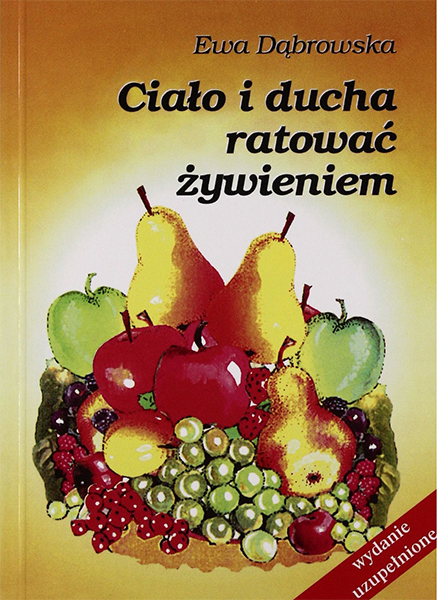
Below is an example of a vegetarian menu, from my diet:
Breakfast:
1/sandwich:
fried egg sprinkled with chives, slice of bread (preferably rye flour, buckwheat flour, millet) spread with butter / avocado, fresh vegetables: tomato, cucumber, radish, lettuce. Instead of an egg, we can use: cottage cheese, for example mixed with chives and radish, onion or pickled cucumber and herbs (ramson, thyme), cheese or vegetable pate.
Remember, always put fresh vegetables on your sandwich. We need fiber that fresh vegetables will provide us with.
2/ omelette with vegetables or fruits.
Second breakfast:
fruit and vegetable smoothie, for example: pineapple, mango, celery, mint, water, coconut milk / almond / oat milk
and a handful of nuts;
or:
millet groats with huckleberries / blueberries or grated apples;
oatmeal with vegetable milk, honey and grated apple. Millet groats or porridge may be the first breakfast, and second breakfast prepare sandwiches.
Dinner:
chops from millet groats, potatoes / buckwheat groats / rice, fresh carrot salad / radicchio, white or red cabbage / mix: lettuce, tomato, cucumber / beetroot;
vegetables’ lecho with rice / buckwheat groats / noodles (better from wholemeal).
Supper:
bread with vegetable paste / vegetable pate and fresh vegetables;
bread with avocado paste with a slice of red pepper and suckers;
vegetable pie with a slice of bread;
raw vegetable salad topped with olive oil with roasted sunflower seeds, with a slice of bread.
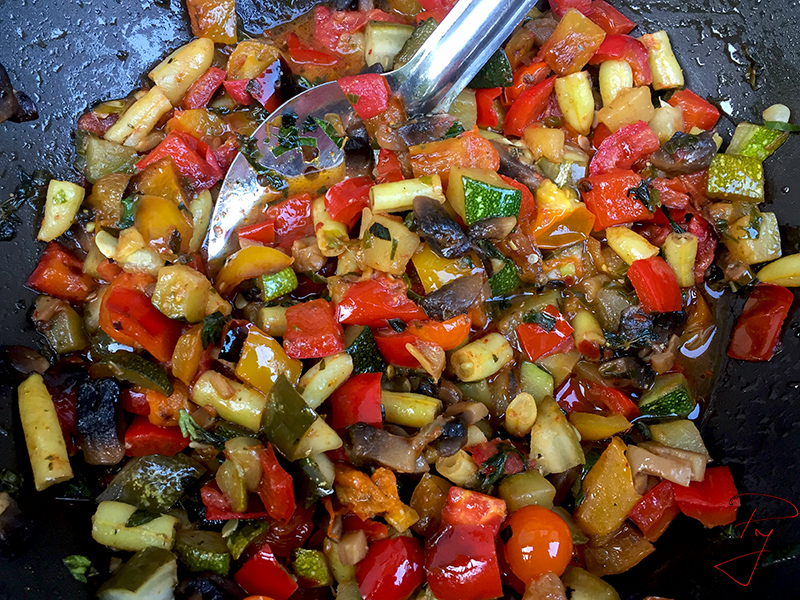
Here are a few recipes for vegetarian dishes:
Zucchini Cream Soup
To start with cutting the soup greens:
- 1 parsley root,
- 2 carrots,
- ½ celery.
Precook ingredients in about 1.5 litters of water.
Then add the sliced zucchini (2 small) peeled from the skin. Season with: salt, pepper, lovage, laurel leaf and dried nettle, a little nutmeg (herbs and spices - as you like).
Add fresh:
- ½ pear,
- ½ leek.
Blend everything. Finally, add about 4 tablespoons of cream, a little lemon and fresh parsley.
May be served with pumpkin seeds.
Pancakes with leek
Pancakes - like pancakes, so I will focus on stuffing to them.
Stuffing for about 9 small pancakes:
Cut 5 leeks into small cubes. In the saucepan heat the clarified butter and glaze the pores. Then add half a cup of cream and stew. Put ¼ of the pear cut into small cubes. Then add the cutting smoked sheep cheese (it's salty enough, you do not need to use salt anymore). At the end put a few drops of lemon, a bit of white wine, fresh parsley and pepper.
Stuff pancakes. Pour over the cream sauce that remained in the pot.

Chickpea paste
Chickpeas canned from a jar / can or normal one previously soaked (this is the best), cooked a few minutes with pieces of carrot and linseed. Then all the ingredients blend with the addition of olive oil, garlic or ramson, walnuts, thyme. Salt, pepper to taste. You can also add dried tomatoes and a hard-boiled egg (they will also improve the taste).
Cutlets with millet groats
Cook the millet groats. Add mushrooms fried with onions, 2 leaves of celery, a bunch of fresh parsley, optionally grated cheese (e.g. parmesan), egg, salt and pepper. Blend. Form chops. Dredge in breadcrumbs or sesame and fry.
It is also a very good as stuffing for cabbage rolls (then we do not blend the ingredients).
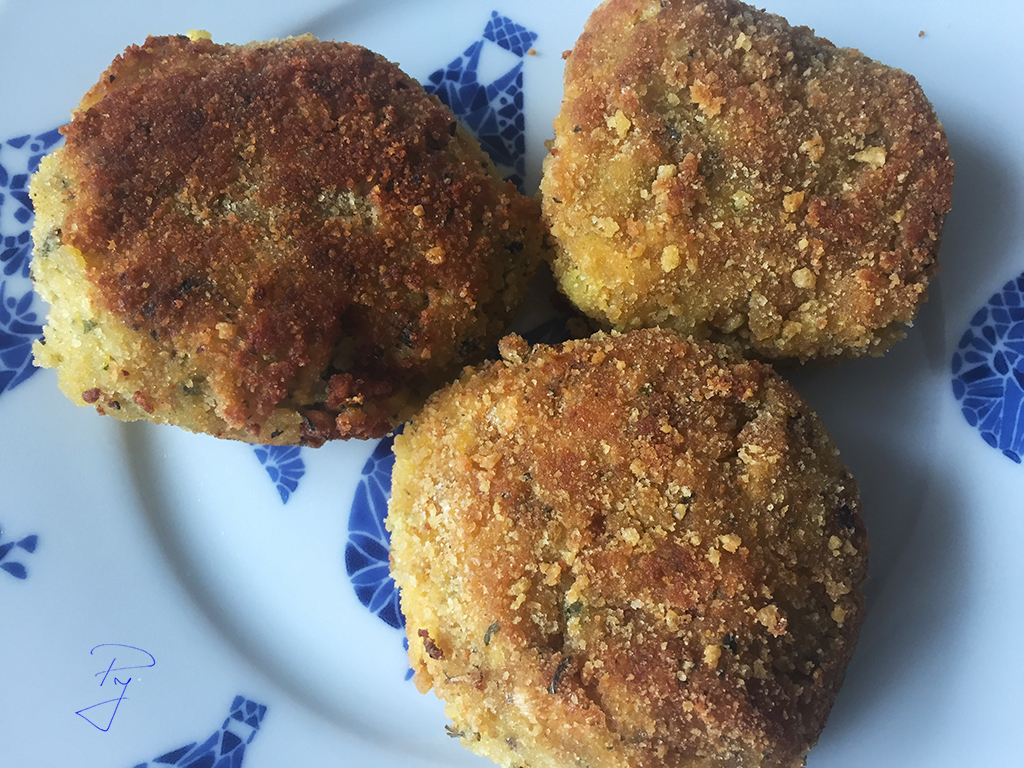
Spinach French pastry
(a 1 portion for 2)
Components:
puff pastry (when bought in pieces - 4 slices),
a packet of fresh spinach,
4 cloves of garlic,
a few dried tomatoes,
a few black olives,
almond flakes,
tomato sauce (preferably spicy),
salt and pepper.
Divide the puff pastry into two parts (in the case of pastry in pieces - 2 slices). Put in an oven dish and bake 10 minutes. At that time, in the clarified butter, fry the sliced garlic. Then add the spinach. Glaze together. Add dried tomatoes and black olives cut in half. Finished spinach pastry put on baked puff pastry. Sprinkle the top with almond flakes. Finally, put the second part of the puff pastry and lightly coat with tomato sauce. All sprinkle with a bit of almond flakes.
In my column, I do not intend to attack carnivores, I take more in defence of herbivores, what led me and my colleagues after the diet, that we decided on this way of eating. We are not freaks, and the facts foregoing above clearly show it.
Related articles:
http://jarkiewicz.eu/articles/index/index/article/a-balanced-meal-contra-wrong-eating-habits
http://jarkiewicz.eu/articles/index/index/article/a-good-life-with-lesniowski
